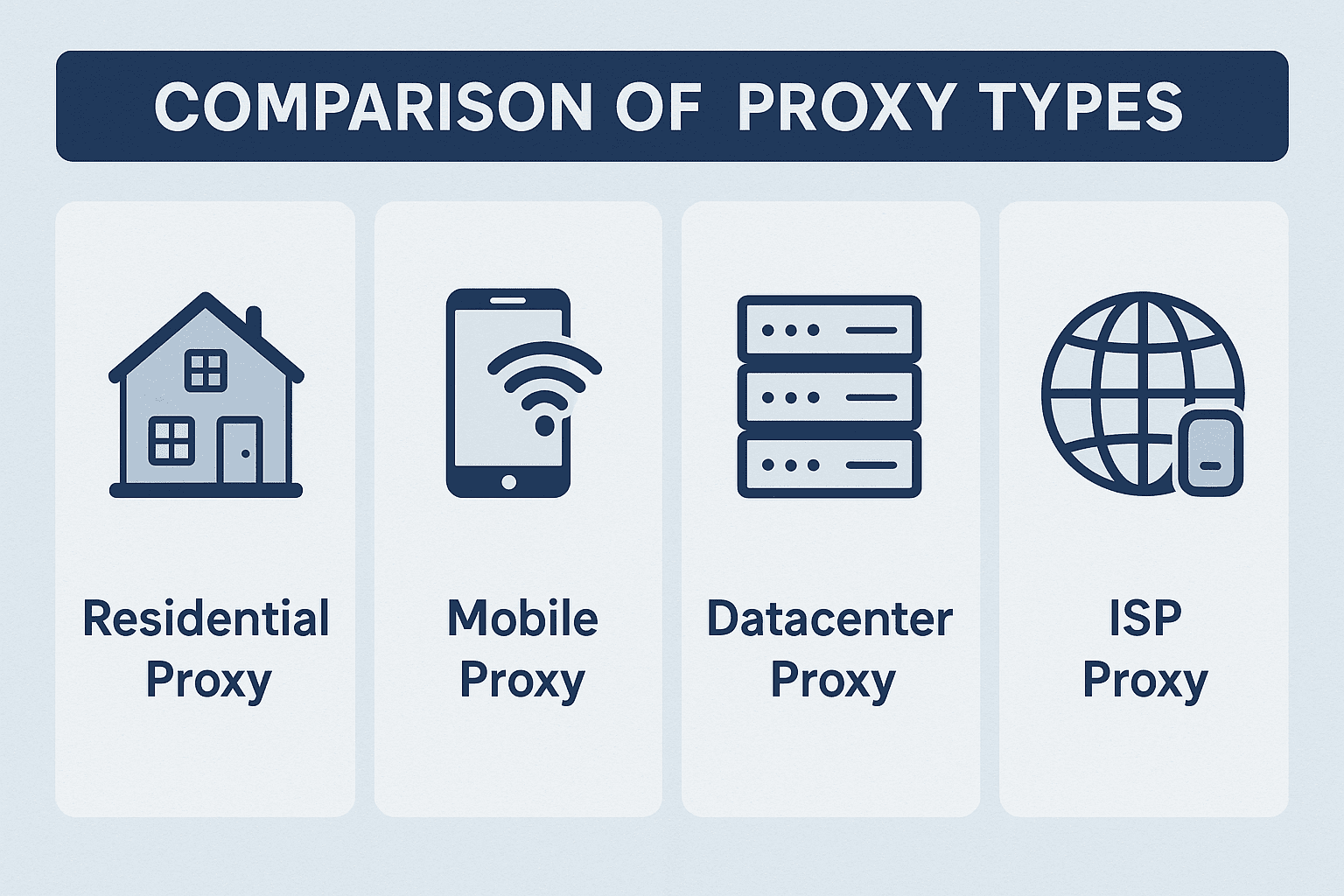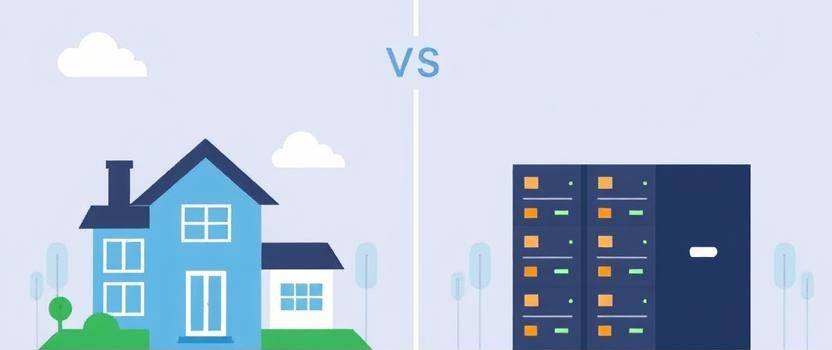How to Choose the Right Proxy for Web Scraping?
Discover detailed information about datacenter, residential, and mobile proxies. Learn how to choose the perfect type of proxy to ensure success in your web scraping projects.

Introduction to Choosing a Proxy
Choosing the right proxy is not just a technical detail — it is a key strategic decision for any web scraping project. An improper proxy can result in blocks, CAPTCHA appearances, and poor data quality. Understanding the different types of proxies will help you avoid these issues and maximize your results.
A well-chosen proxy is the foundation of successful web scraping. It's the difference between a smoothly running project and a constant battle with blocks.
Types of Proxies
There are several key types of proxies used in web scraping, each with distinct advantages and disadvantages:
- Datacenter Proxies: Fast and cost-effective, but easier to detect and block by websites.
- Residential Proxies: Use real IP addresses provided by ISPs, making them appear as regular users and significantly harder to detect.
- Mobile Proxies: Use IP addresses assigned by mobile carriers, offering the highest level of anonymity and resistance to blocks, ideal for mobile-specific scraping tasks.
Detailed Comparison of Proxies
Datacenter Proxies
Datacenter proxies come from cloud servers and are not tied to ISPs. They offer excellent speed and affordability but are more prone to detection by anti-bot systems.
| Advantages | Disadvantages |
|---|---|
|
|
Best Use: Large-scale scraping on less protected websites, performance testing.
Residential Proxies
Residential proxies use real IP addresses associated with actual households. They are considered much more trustworthy by websites.
| Advantages | Disadvantages |
|---|---|
|
|
Best Use: Access to geographically restricted content, e-commerce price monitoring, social media account management.

Mobile Proxies
Mobile proxies route traffic through IP addresses assigned by mobile networks. These proxies offer the highest level of reliability and the lowest risk of being blocked.
| Advantages | Disadvantages |
|---|---|
|
|
Best Use: Mobile app testing, mobile content scraping, sensitive projects requiring maximum discretion.
Comparison Table
| Feature | Datacenter | Residential | Mobile |
|---|---|---|---|
| Anonymity | Low | High | Very High |
| Speed | Very Fast | Moderate | Moderate |
| Cost | Low | Medium | High |
| Detection Risk | High | Low | Very Low |
| IP Diversity | Limited | Wide | Limited |
| Stability | High | High | Variable |
Factors to Consider
When choosing a proxy type for your project, be sure to carefully evaluate:
- The anti-bot measures and detection sensitivity of the target website.
- The expected scraping volume and concurrent connection requirements.
- Geographic targeting needs and IP location diversity.
- Budget constraints and cost-effectiveness.
- Speed and bandwidth requirements.
Did You Know?
IP rotation is a key strategy in web scraping. Changing the IP every 10-15 requests can greatly reduce the risk of detection and blocking.
Best Practices for Using Proxies
To maximize scraping success while minimizing risk:
- Regularly rotate your proxies to avoid IP blocks.
- Carefully manage sessions to maintain consistency, especially with residential proxies.
- Implement realistic delays between requests to mimic human behavior.
- Continuously monitor proxy performance and replace poorly performing IPs.
Conclusion
There is no one-size-fits-all proxy solution. For general web scraping, a mix of residential and datacenter proxies often provides the best balance between performance, anonymity, and cost. For more sensitive tasks requiring maximum discretion, mobile proxies are the ideal choice despite their higher cost. Understanding these differences will help you create a scraping strategy that is efficient, scalable, and resistant.